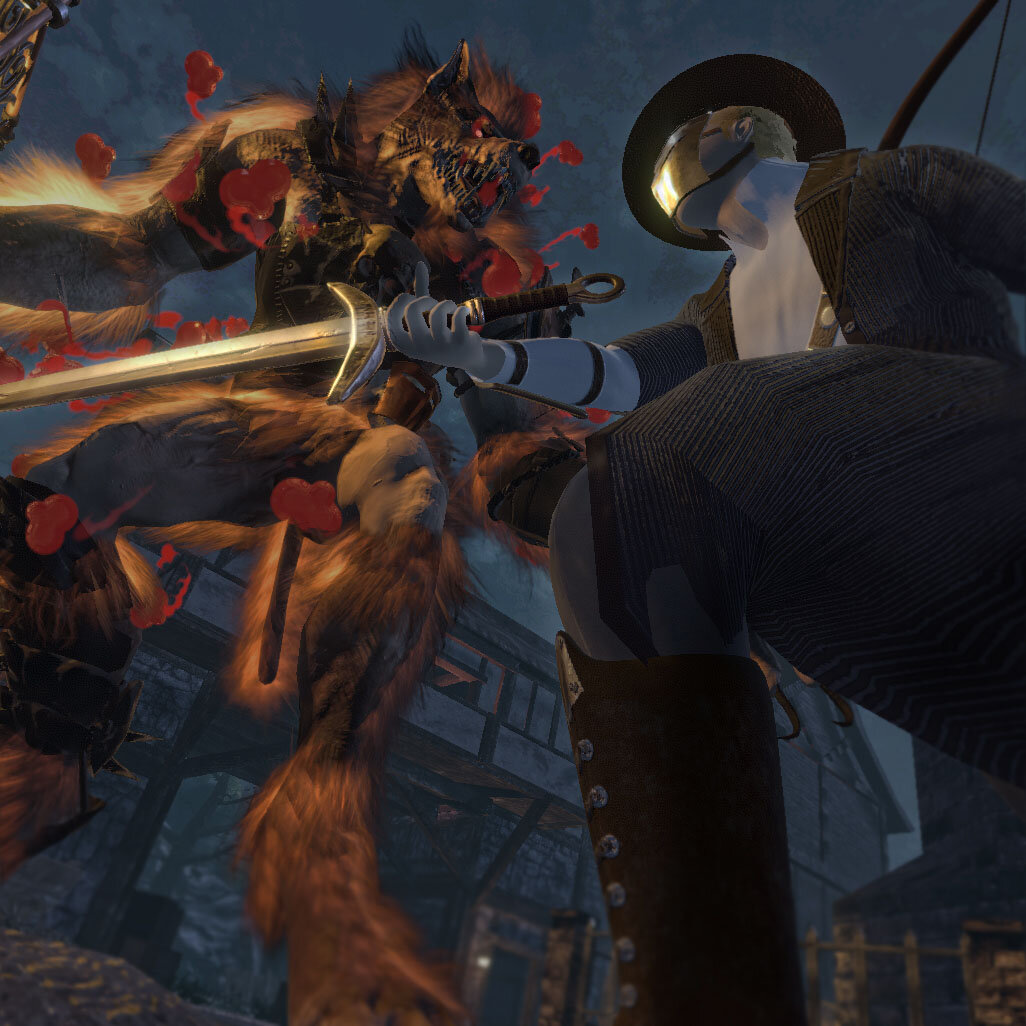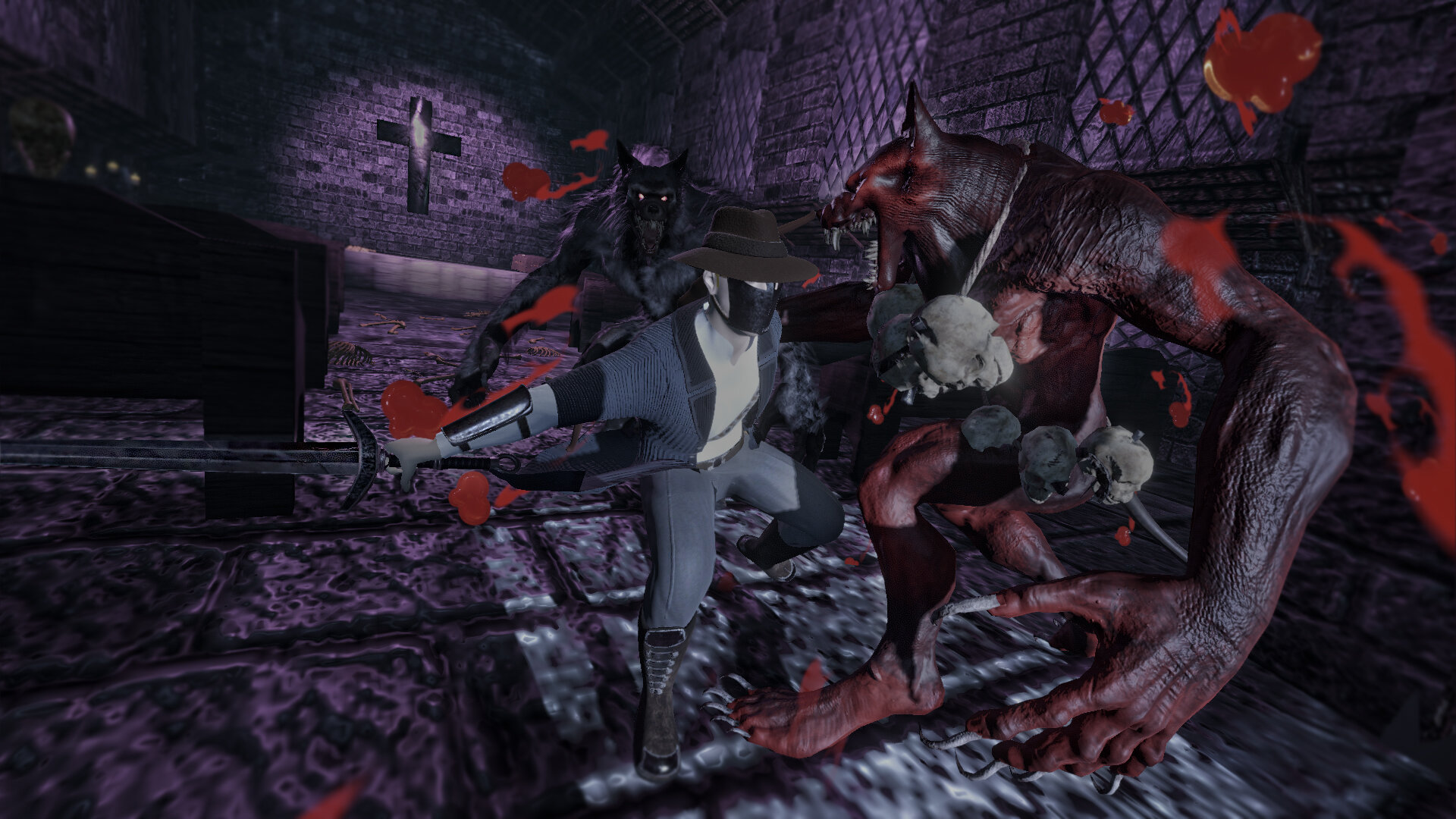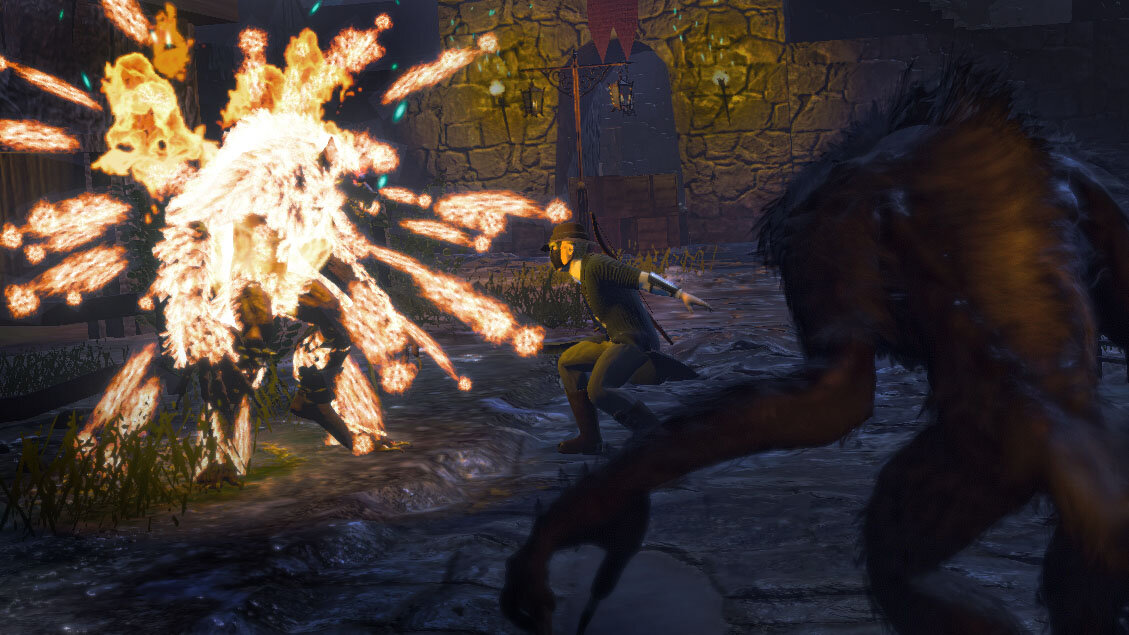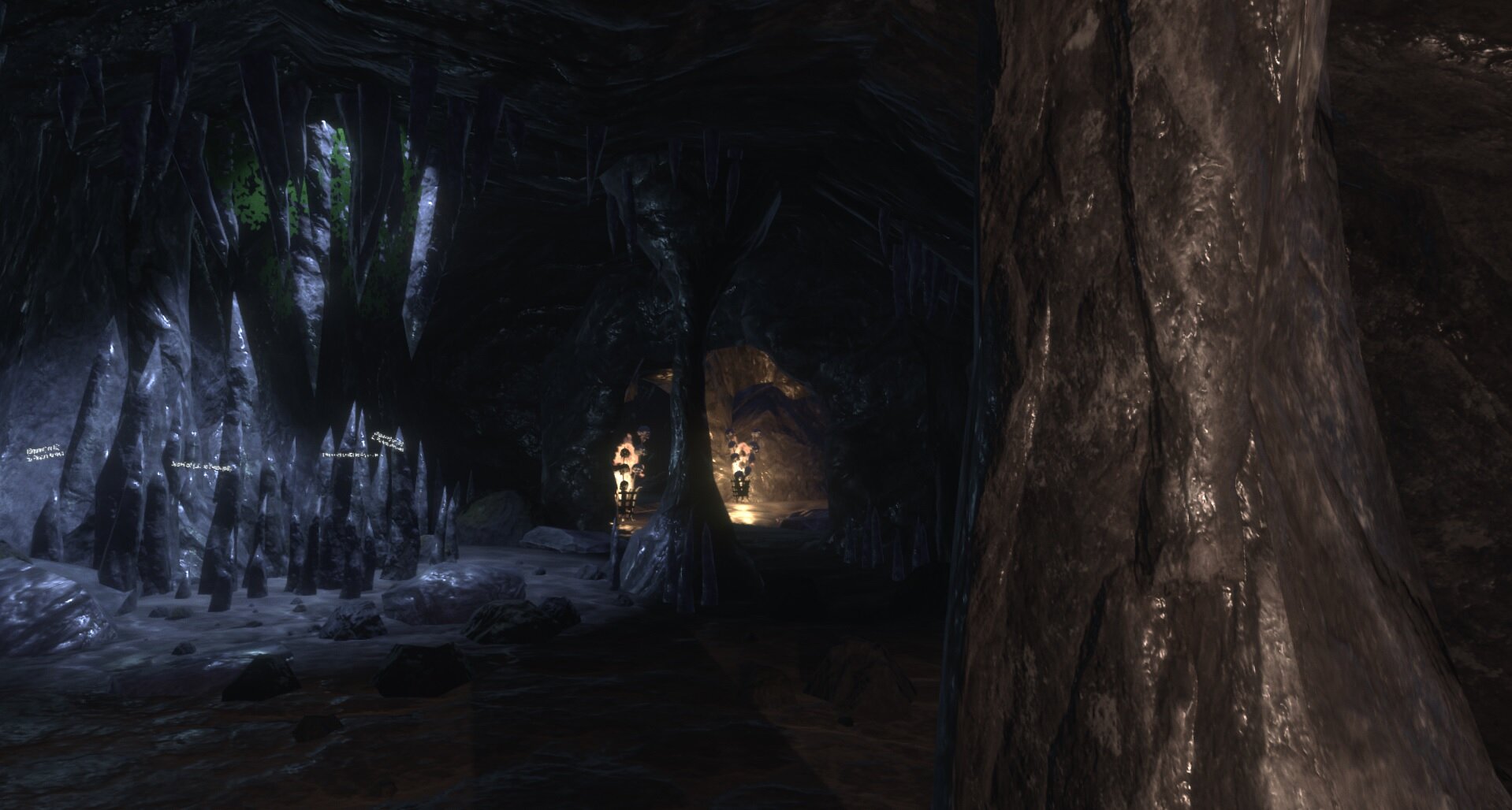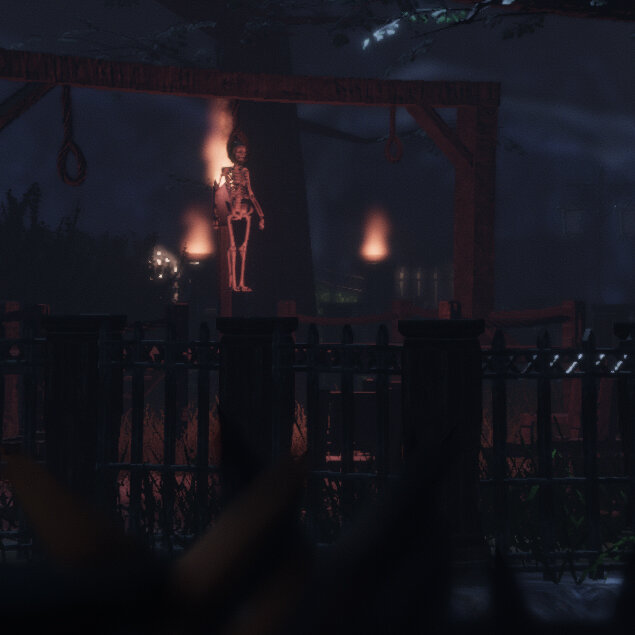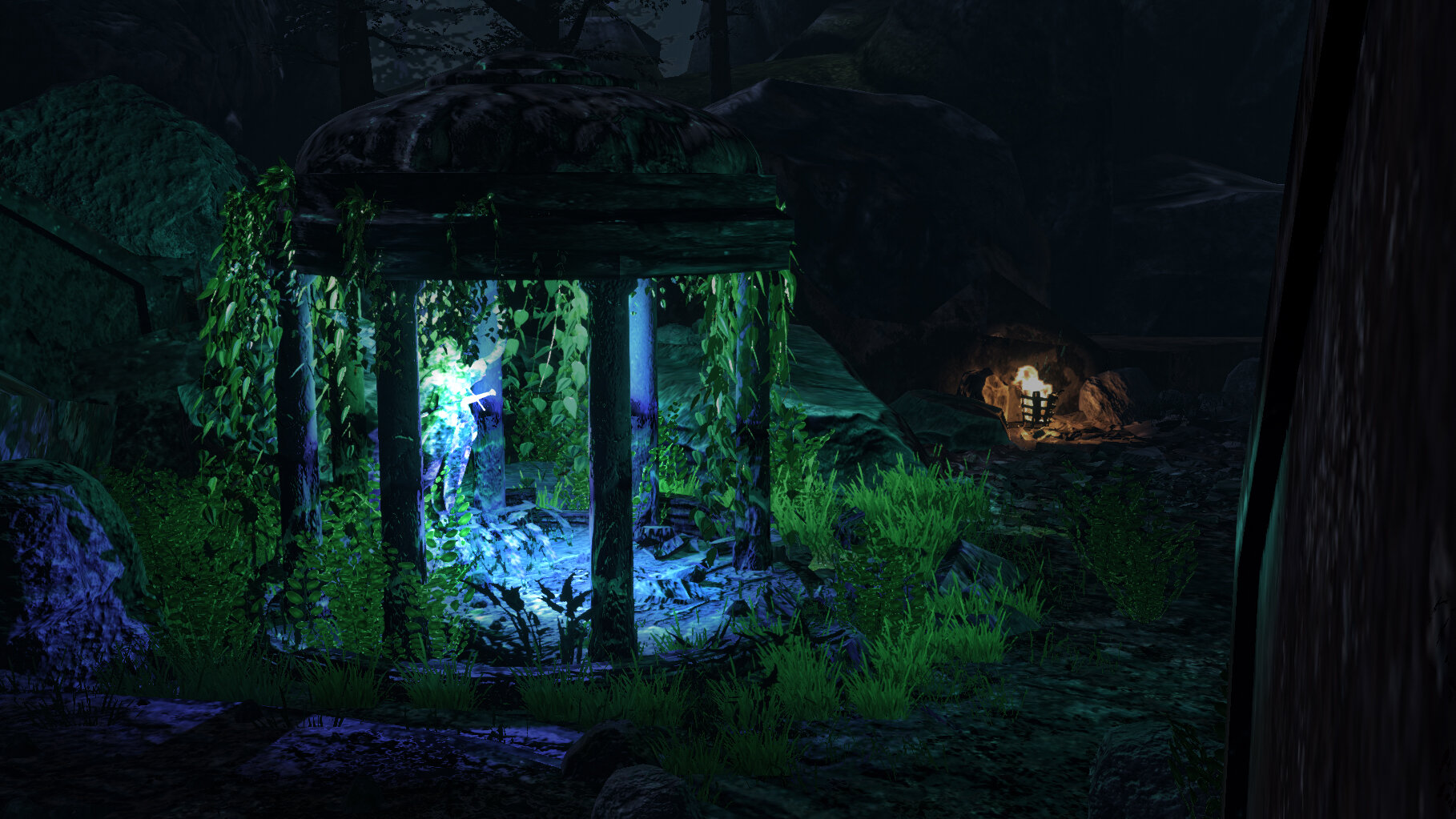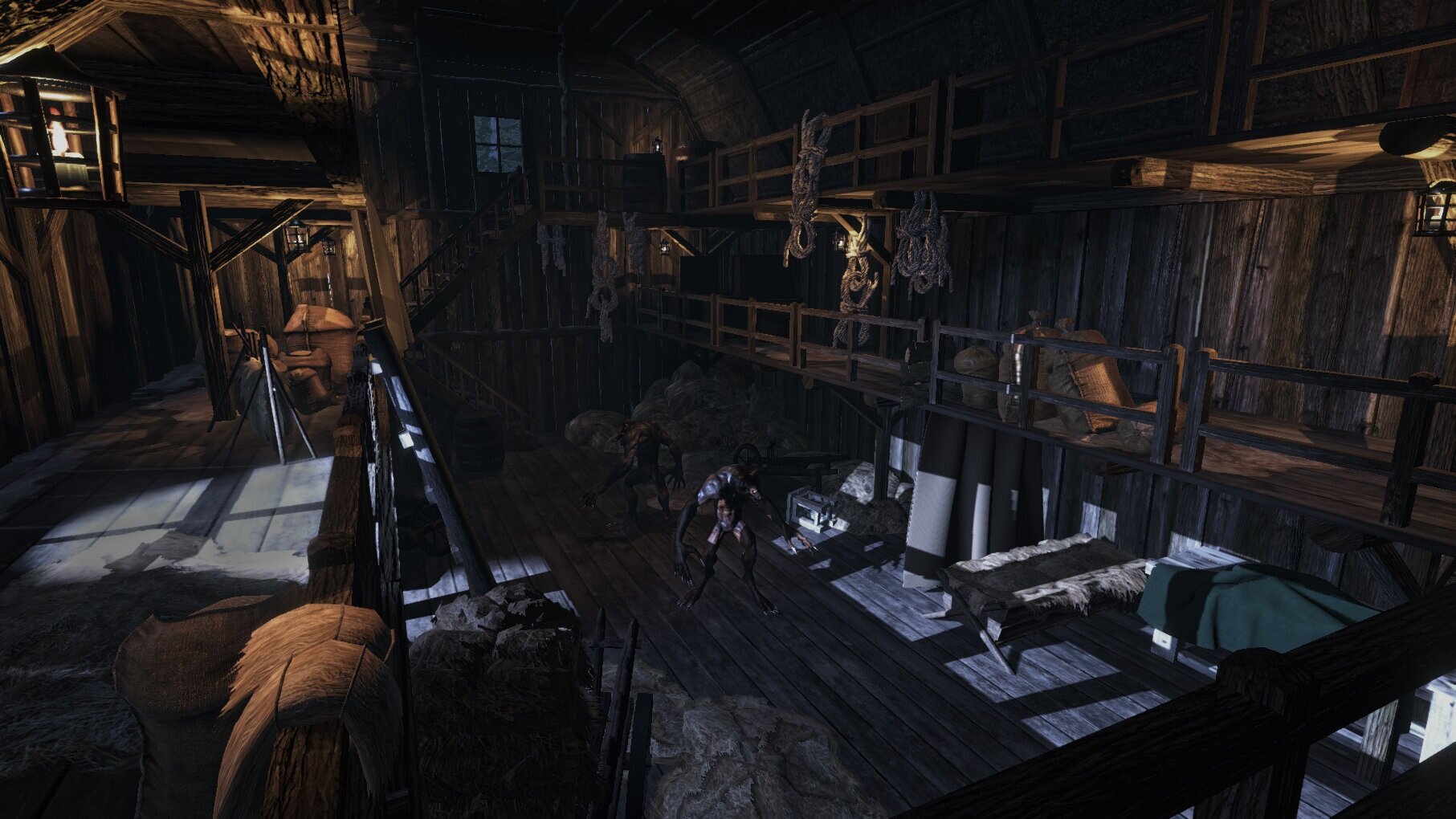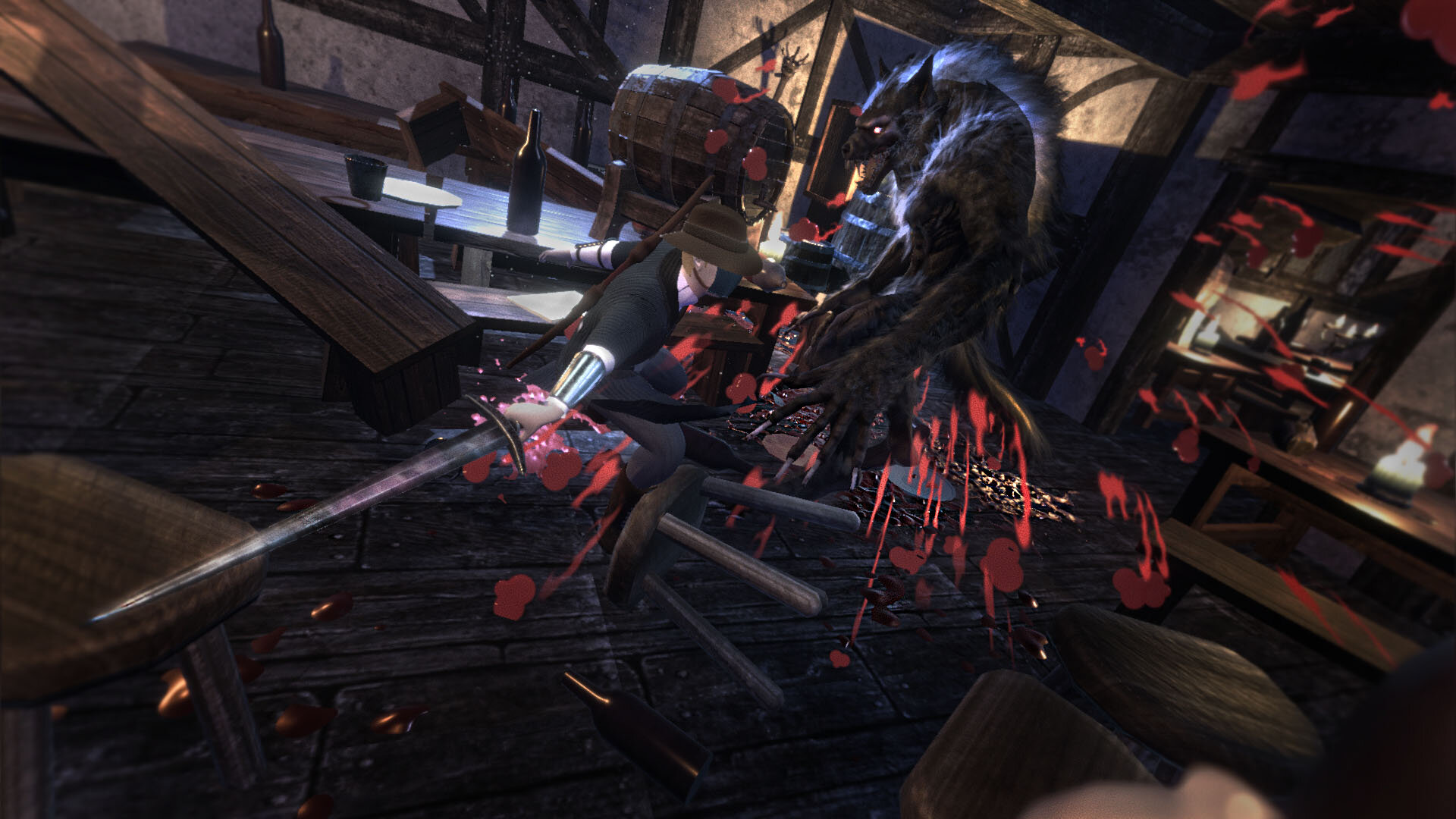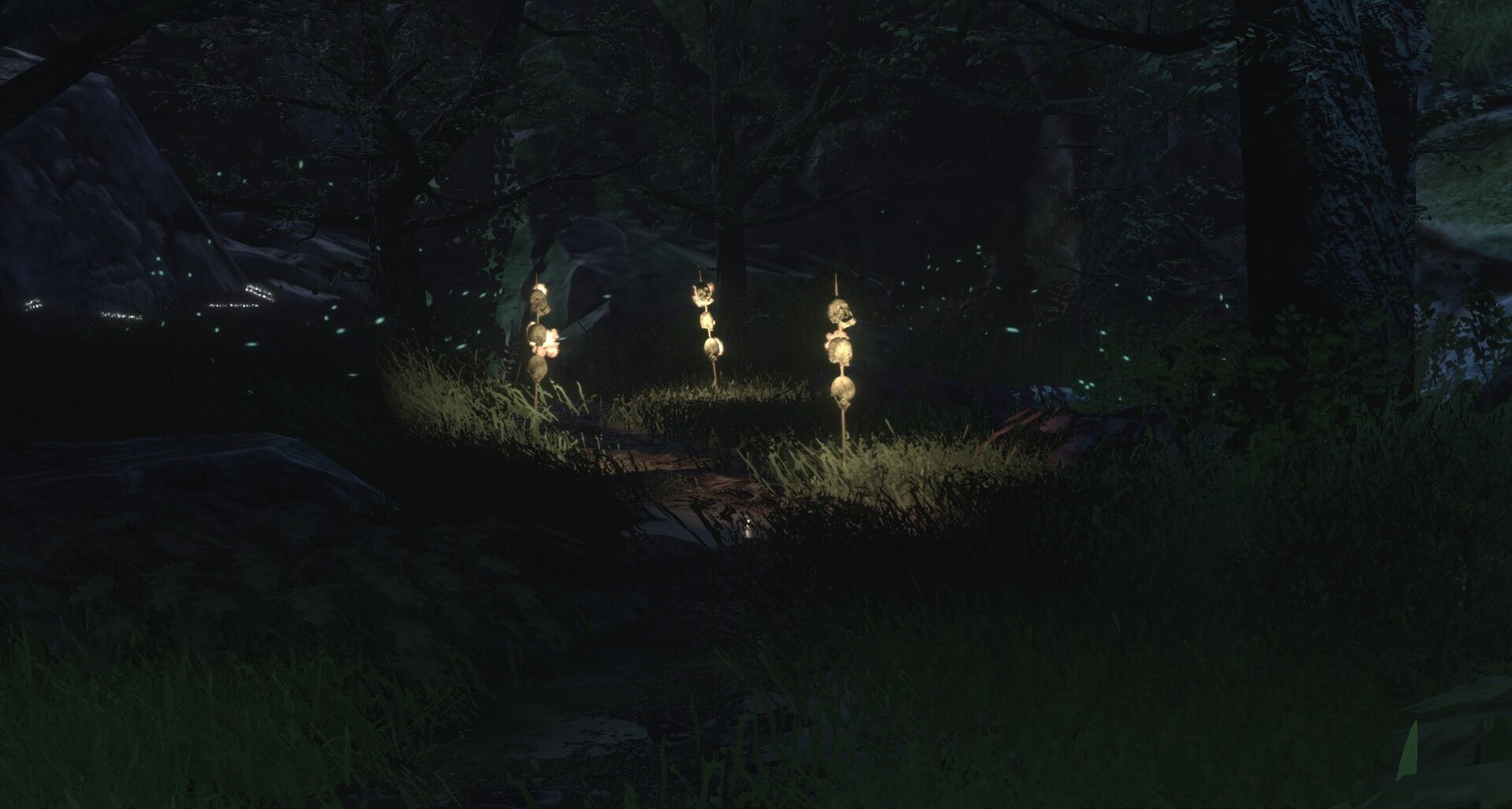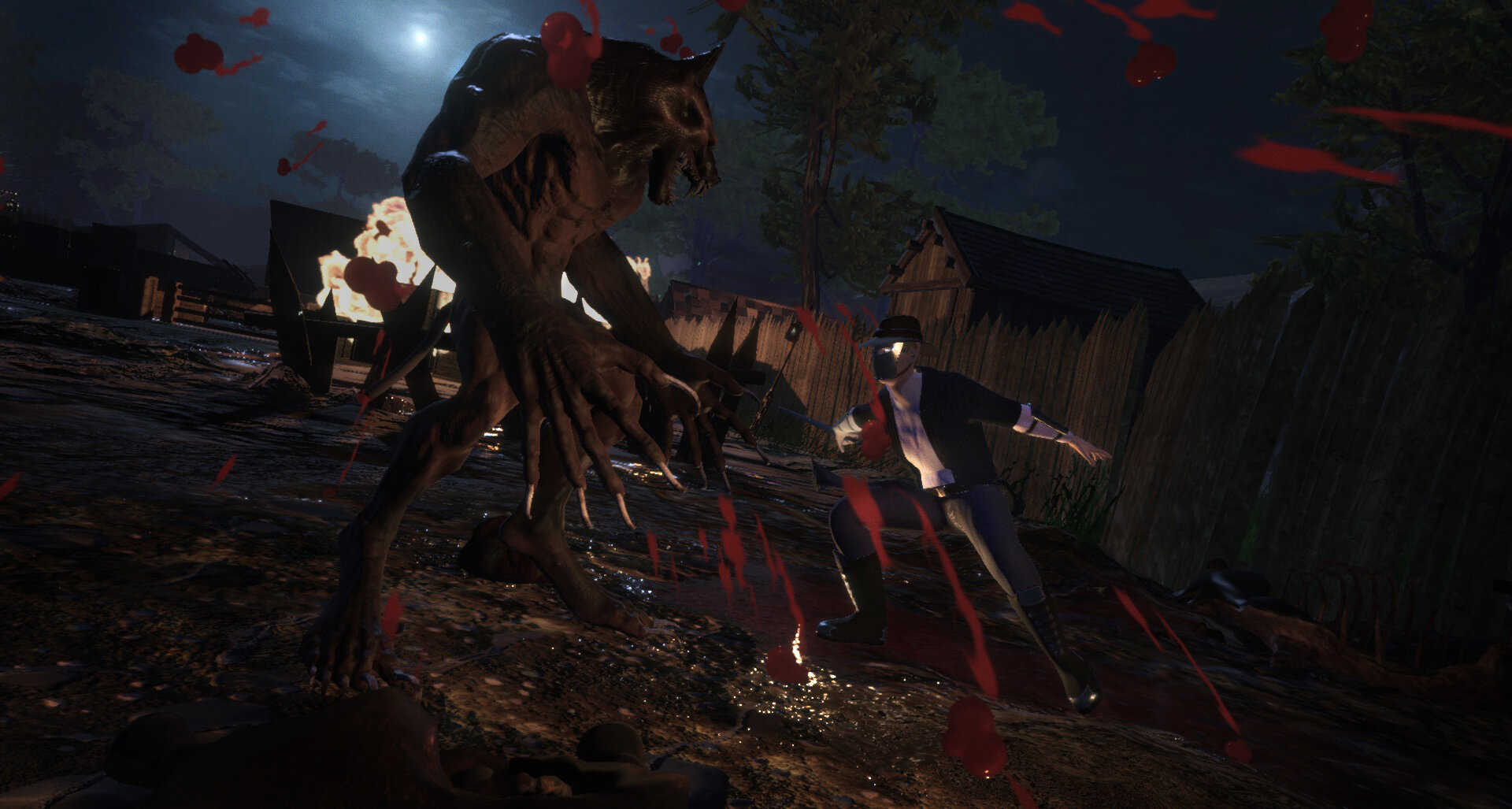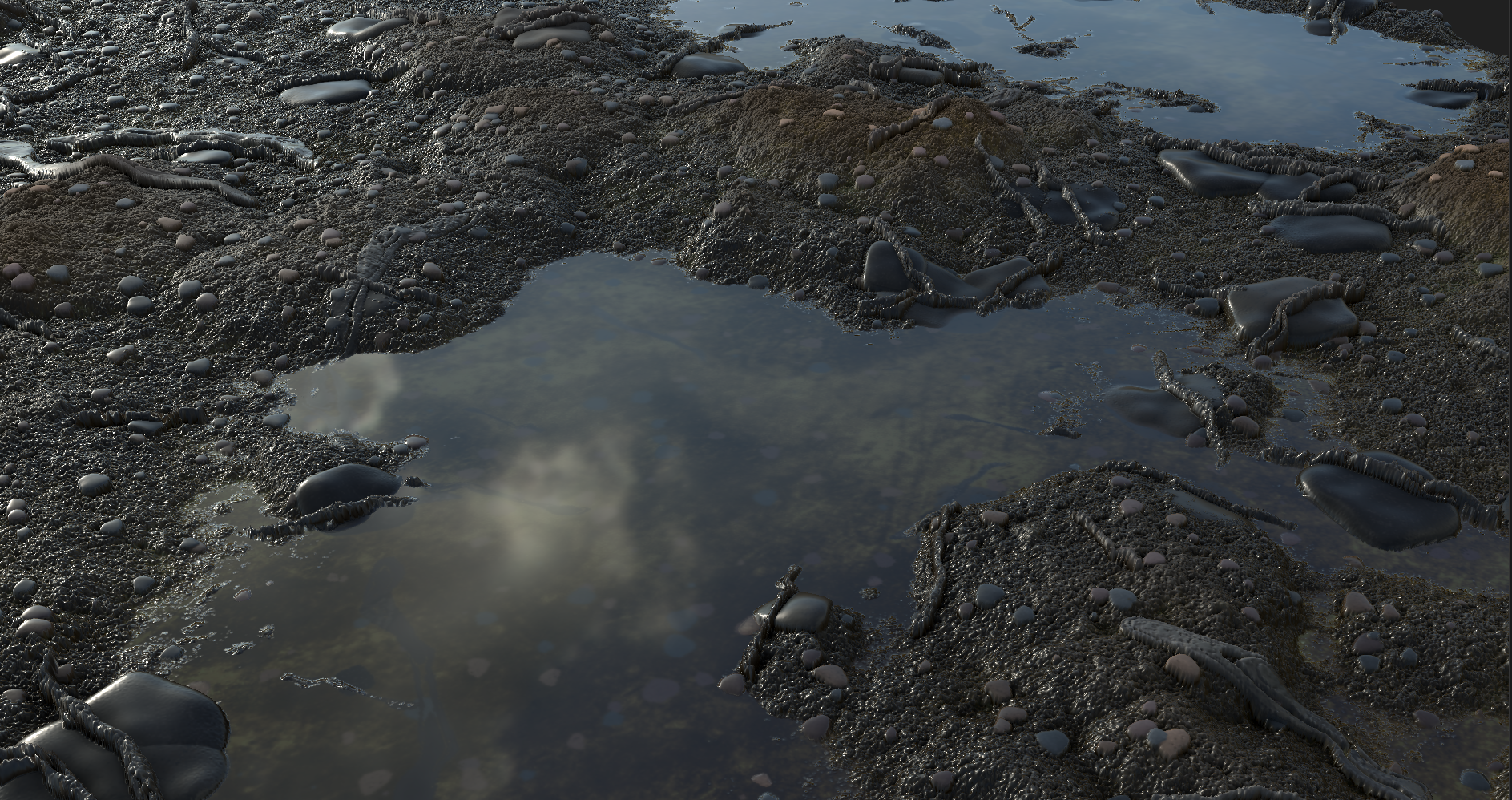Knight of the Silver Eye
Summary
Knight of the Silver Eye is a third-person horror adventure game that focuses on environmental storytelling and fast combat. KOTSE was created as a DePaul University Capstone project between 7 DePaul Students/Alumni.
I began working on this project during my last year at DePaul University and continued working on it after my graduation throughout the duration of its development. My roles in this project were Technical Artist, Level Designer, and Capture Artist.
Development Information
Role: Technical Artist, Level Designer, Capture Artist
Team: Frosty Fox Studios
Team Size: 7
Tools: Unity Teams, Autodesk Maya, Substance Painter, Substance Designer, Adobe Photoshop, Visual Studio, Google Forms
Duration: November 2020 -June 2021
Genre: Horror Adventure
Platform: Windows
Status: Completed
My Role As Technical Artist
As the Technical Artist I was tasked with updating the graphics and creating the lighting to assist the player in navigating through the game. Using Substance Designer, I created a ground material system which allows the ground to seamlessly transition through different ground materials like forest ground, dirt, mud, road, blood, and water. This change made it easier for the player to clearly find the explorable areas of the level, and it also allowed for any of the game designers to paint the terrain with whichever ground type necessary. With Substance Painter, I updated the main character’s textures and materials after researching Eastern European 1700’s clothing.
One of the more obvious visual bugs in the game during its early stages were objects that were not displaying their textures and materials correctly. For objects in the level which were not displaying their textures correctly, I corrected and optimized their UV maps in Maya. Creating and reviewing playtesting reports to improve visuals based on feedback was one of the main responsibilities I carried out. In some of the feedback, players were having difficulty finding healing items. I created particle systems and implemented them into C# scripts for healing prefabs to assist the player in finding the “heal” objects easier. The bright blue glow from the heal assets easily stand out from the gray tones.
When creating the lighting for the game, I used the classic horror technique of only lighting small areas which give the player information about their surroundings, but keeps the rest of the environment dark and mysterious. One example of this can be found inside the cave, where I created the illusion of skylights by grouping together stalagmites, vines, and leaves, and placing a spot light in between them coming through the ceiling to create a dimly lit atmosphere. In the Barn area I decided to use dramatic lighting and kept the horror theme consistent by giving the lights a small range but a high exposure. Due to having so many lights and objects in an open-world game, for example the rocks and stalagmites in the cave area, I had to optimize LODs and lightmaps to keep the game running smoothly. LODs were also created in Maya.
Storytelling Through Level Design
I was asked by the Lead Level Designer to help dress different areas in the level using assets created or collected by the artist. I had the privilege of working on the first area that the player sees in the game. I dressed the dock area with different objects a fishing town in the 1700’s would have near the water. Although we had a limited variety of assets, for example boxes and barrels, I added variety to bundled duplicate prefabs by changing sizes and rotations. One of my main inspirations for the areas that I worked on was Assassin’s Creed and the way they dress their areas with repeated assets but still create unique compositions by adding variety to the way they are placed and sized. To make the dock area feel more lived-in, I added a multitude of overhanging ropes, indicating heavy traffic throughout the day. I chose these set of objects for the dock area to give the player an idea of what the overall aesthetic of the game will feel and look like, as these are common objects found throughout the game. In the Tavern area, I wanted to show the player the amount of damage that a Lycan can do to an unarmed group of civilians. The destroyed Tavern, along with the destroyed barrier area, is a display of the Lycan’s strength and threat level to inexperienced people.
Capturing The Experience
I created all the in-game images for KOTSE using the Cinemachine plug-in for Unity. As the capture artist I used previous digital photography experience and lens optics concepts, to create compositions using visual design theories and practices. In the Unity engine, I set up different cameras to take photos at different stages of development, and to capture footage for the trailer using track and dolly systems. I created the post-processing to make the still images stand out, while keeping the in-game graphics consistent.
Original
Updated
Original
Updated
Original
Update 1
Update 2
Original
Updated
First Pass
Updated
My Duties Included:
- Concepting and creating areas of interest using environmental storytelling
Creating/dressing the dock area (0:33), the first checkpoint area (2:18), the broken barrier area (6:00), and the cave area (7:35) in Level 1
Creating/dressing the gazebo checkpoint area (10:00), the tavern area (14:42), and the barn area (19:40) in Level 2
Giving an overall pass on the game to update textures and materials
- Lighting artist and generating lightmaps for levels
Creating the lighting for the game, I wanted to create a classic horror ambience by only lighting essential areas of the level to assist the player with navigation, while keeping the overall levels dark
Using light probes and reflection probes for lighting quality
When generating lightmaps I strived to create semi-realistic lighting while making sure the lightmaps weren’t too large
- Implementing 3D art in Unity Engine and editing corresponding scripts for interactable objects
Creating a ground material system in Substance Designer used throughout the levels (3:00)
Creating particle systems for healing bowls and heal wells (4:38)
Updating flame particle systems and sprites
Collecting, creating, and LOD optimization of 3D assets
Worked with 3D artists to inform asset creation pipelines.
- Resolved level performance optimization issues
- Setting up camera rigs for screenshots and cinematic shots
Created screenshots using photography knowledge
- Creating the post-processing
- Creating playtesting report forms
- Collecting feedback and data from playtesters
